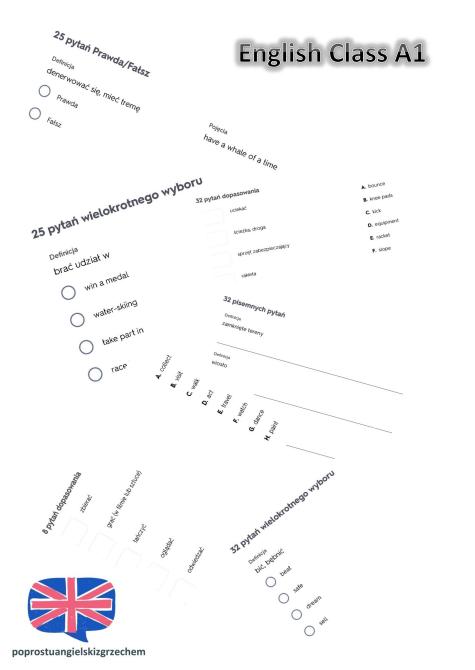Hej! Let's tackle the A1 English sprawdzian. Wyobraź sobie, that this is like building with LEGO bricks.
Understanding the Basics
First, we learn simple words and phrases. This is the foundation. Think of it as the baseplate for your LEGO creation.
For example: "Hello," "Goodbye," "My name is..." They're like those big, flat LEGO pieces.
Greetings and Introductions
"Hello! How are you?" To jak powiedzenie "Cześć! Jak się masz?"
Picture a friend smiling and waving. That's "Hello!"
"I am fine, thank you." Odpowiedź na pytanie. Your friend is good.
"My name is [Your Name]." This identifies you. It's like a name tag on your LEGO minifigure.
Imagine writing your name on a sticker and putting it on the minifigure.
Numbers and Colors
Numbers: One, two, three... To proste liczenie. You use them all the time.
Imagine counting LEGO bricks: "One red brick, two blue bricks, three yellow bricks."
Colors: Red, blue, green... Everything has a color! Like different LEGO bricks.
Think of your favorite colored LEGO bricks. Red is "red," blue is "blue," and so on.
Simple Questions
Questions using "What," "Where," and "Who" are important. They help you get information.
"What is your name?" Asking for someone's name. Like checking the name tag on a LEGO character.
"Where do you live?" Asking about location. Imagine looking at a map of LEGO town.
"Who is this?" Asking about a person. Like pointing to a LEGO minifigure and asking who it is.
Common Verbs
Verbs are actions. They make the sentences alive. Think of them as the motors in your LEGO creations.
"To be"
"I am," "You are," "He/She/It is." These link subjects to descriptions.
"I am a student." To znaczy "Ja jestem uczniem." It's like saying "This LEGO figure is a builder."
"To have"
"I have," "You have," "He/She/It has." These show possession.
"I have a book." To znaczy "Ja mam książkę." It's like saying "This LEGO figure has a tool."
"To like"
"I like," "You like," "He/She/It likes." These express preferences.
"I like ice cream." To znaczy "Lubię lody." It's like saying "This LEGO figure likes building spaceships."
Everyday Vocabulary
Words you use every day are essential. They're like the standard LEGO bricks that fit everything.
Family
"Mother," "Father," "Brother," "Sister." These are family members.
Picture a LEGO family: a mother figure, a father figure, and child figures.
Food
"Apple," "Banana," "Bread," "Milk." These are common foods.
Imagine a LEGO picnic with LEGO apples, bananas, bread, and milk.
Objects
"Book," "Pen," "Table," "Chair." These are common objects.
Think of a LEGO classroom with LEGO books, pens, tables, and chairs.
Sentence Structure
Sentences follow a pattern. This is like the instructions for building a LEGO model.
Subject + Verb + Object
"I eat apples." Ja jem jabłka.
"She reads a book." Ona czyta książkę.
Simple Questions
"Do you like pizza?" Czy lubisz pizzę?
"Is he a student?" Czy on jest uczniem?
Tips for the Sprawdzian
Practice regularly. This is like building LEGO models over and over again.
Review vocabulary. Look at pictures of the words. Like looking at pictures of LEGO bricks.
Listen to English. Watch cartoons or listen to simple songs. Imagine LEGO characters speaking English.
Don't be afraid to ask for help. Everyone needs help sometimes! Even master LEGO builders use instructions.
Remember, the A1 English sprawdzian is just a step. It's one LEGO brick in your learning journey.
Good luck! Powodzenia! Keep building your English skills!
Think of this sprawdzian as a challenge. Like building a complicated LEGO set without instructions.
Stay positive! You can do it!


